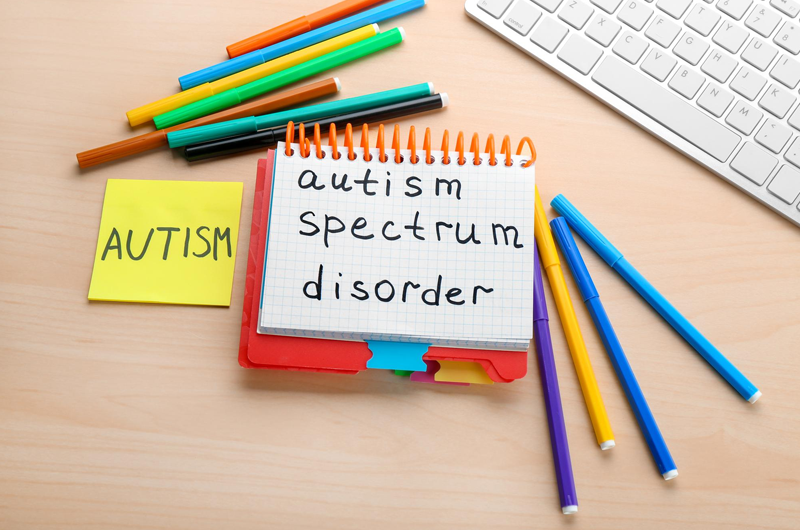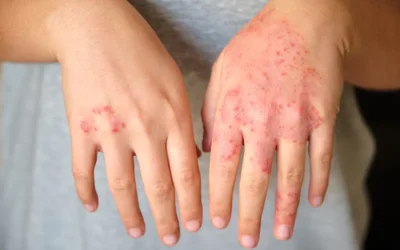Early diagnosis and intervention is very important to ensure quality treatment for autism spectrum disorder or ASD, which is characterized by restricted, repetitive, and stereotyped patterns of behavior, interests, and activities. As the way in which ASD is being diagnosed and classified by healthcare providers is changing, coding for this condition is becoming more challenging. The release of the American Psychiatric Association’s Fifth Edition of Diagnostic and Statistical Manual of Mental Disorders (DSM-5) in May 2013 revised the criteria for the diagnosis and classification of mental disorders. Here is a detailed look at how to report ASD and its diagnostic methods.
DSM-5 Criteria
The diagnostic criteria for autism spectrum disorder have been modified in DSM-5. This has been done on the basis of research literature and clinical experience in the 19 years since the DSM-4 was published in 1994. The changes include:
- The new criteria combine all previous sub-diagnoses such as Autistic Disorder, Asperger Syndrome, Pervasive Developmental Disorder Not Otherwise Specified, and Disintegrative Disorder under one condition named Autism Spectrum Disorder.
- The symptoms have been rearranged into two areas such as social communication/interaction and restricted and repetitive behaviors while the diagnosis will be based on symptoms currently or by history in these areas.
Since DSM-5 diagnostic criteria combines all previous sub-diagnoses under a single condition ASD, it may cause discrepancy between DSM-5 diagnoses and billing databases and make medical billing for this condition more challenging. There are specific codes for sub-diagnoses in both ICD-9 and ICD-10.
It is recommended to report services provided for children with ASD using the following codes:
ICD-9
- 299.00: Autistic disorder, current or active state
- 299.01: Autistic disorder, residual state
ICD-10
- F84.0: Autistic disorder
Diagnosis of ASD
Though ASD can be sometimes identified at 18 months or younger, diagnosis by age 2 is considered very reliable. Diagnosis can only be made by a qualified healthcare professional’s assessment of the child’s behavior and development. However, diagnosing this condition can be difficult. No definitive blood test is there to detect a behavioral disorder of this kind. It takes two steps to diagnose ASD such as developmental screening and comprehensive diagnostic evaluation. Let’s see how these two are reported.
Developmental Screening
According to the CDC recommendations, all children should be screened for developmental delays and disabilities during regular well-child visits at 9, 18 and 24 or 30 months while all children should be screened specifically for ASD during regular well-child visits at 18 and 24 months. Developmental screening is reported with the following CPT codes.
- 96110: Developmental testing; limited (e.g., Developmental Screening Test II, Early Language Milestone Screen), with interpretation and report
- 96111: Developmental testing; extended (includes assessment of motor, language, social, adaptive and/or cognitive functioning by standardized developmental instruments) with interpretation and report
The first code is reported when developmental screening instruments of a limited nature are used while the second code is for extended developmental testing using standardized instruments. Both of these codes may be separately reported if the screening is performed with an evaluation and management (E/M) service.
When a limited screening test is performed with any E/M service, modifier 25 (significant, separately identifiable evaluation and management service by the same physician on the same day of the procedure or other service) should be appended to the E/M code to specify E/M service was distinct and necessary during the same visit. If extended screening test is reported with an E/M service, modifier 25 should be appended to the E/M code or modifier -59 (distinct procedural service) should be appended to the developmental testing code to specify that the services were separate and necessary at the same visit.
Comprehensive Diagnostic Evaluation
New CPT Category III codes came into effect for reporting adaptive behavior assessment/intervention services (ABA) for the assessment and treatment of ADS for the services performed on or after July 1, 2014. There are sixteen codes for reporting behavior identification assessment, observational behavioral follow-up assessment, exposure behavioral follow-up assessment, and adaptive behavior treatment. The codes are as follows.
- 0359T: Behavior identification assessment, by the physician or other qualified health care professional, face-to-face with patient and caregiver(s), includes administration of standardized and non-standardized tests, detailed behavioral history, patient observation and caregiver interview, interpretation of test results, discussion of findings and recommendations with the primary guardian(s)/caregiver(s), and preparation of report
- 0360T: Observational behavioral follow-up assessment, includes physician or other qualified health care professional direction with interpretation and report, administered by one technician; first 30 minutes of technician time, face-to-face with the patient
- 0361T: Observational behavioral follow-up assessment, includes physician or other qualified health care professional direction with interpretation and report, administered by one technician; each additional 30 minutes of technician time, face-to-face with the patient (list separately in addition to code for primary service)
- 0362T: Exposure behavioral follow-up assessment, includes physician or other qualified health care professional direction with interpretation and report, administered by physician or other qualified health care professional with the assistance of one or more technicians; first 30 minutes of technician(s) time, face-to-face with the patient
- 0363T: Exposure behavioral follow-up assessment, includes physician or other qualified health care professional direction with interpretation and report, administered by physician or other qualified health care professional with the assistance of one or more technicians; each additional 30 minutes of technician(s) time, face-to-face with the patient (list separately in addition to code for primary procedure)
- 0364T: Adaptive behavior treatment by protocol, administered by technician, face-to-face with one patient; first 30 minutes of technician time
- 0365T: Adaptive behavior treatment by protocol, administered by technician, face-to-face with one patient; each additional 30 minutes of technician time (list separately in addition to code for primary procedure)
- 0366T: Group adaptive behavior treatment by protocol, administered by technician, face-to-face with two or more patients; first 30 minutes of technician time
- 0367T: Group adaptive behavior treatment by protocol, administered by technician, face-to-face with two or more patients; each additional 30 minutes of technician time (list separately in addition to code for primary procedure)
- 0368T: Adaptive behavior treatment with protocol modification administered by physician or other qualified health care professional with one patient; first 30 minutes of patient face-to-face time
- 0369T: Adaptive behavior treatment with protocol modification administered by physician or other qualified health care professional with one patient; each additional 30 minutes of patient face-to-face time (list separately in addition to code for primary procedure)
- 0370T: Family adaptive behavior treatment guidance, administered by physician or other qualified health care professional (without the patient present)
- 0371T: Multiple-family group adaptive behavior treatment guidance, administered by physician or other qualified health care professional (without the patient present)
- 0372T: Adaptive behavior treatment social skills group, administered by physician or other qualified health care professional face-to-face with multiple patients
- 0373T: Exposure adaptive behavior treatment with protocol modification requiring two or more technicians for severe maladaptive behavior(s); first 60 minutes of technicians’ time, face-to-face with patient
- 374T: Exposure adaptive behavior treatment with protocol modification requiring two or more technicians for severe maladaptive behavior(s); each additional 30 minutes of technicians’ time face-to-face with patient (list separately in addition to code for primary procedure)
Even though the adaptive behavior assessment and treatment Category III codes may be used by any physician or other qualified healthcare professional, most of these services are provided by a behavior analyst or licensed psychologist. Coverage for these services is determined by State laws as well as government and commercial health plans. You must assign the most appropriate codes to receive maximum reimbursement for your services.




